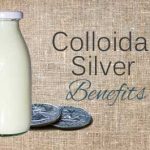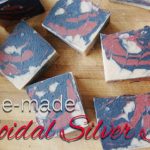
Colloidal Silver by
The Amber Tree
A high-quality nanoparticle size colloidal silver
To produce the highest quality colloidal silver takes patience. The process is slow and steady, utilizing low current waveforms whilst taking many hours, sometimes days to produce (depending on the volume created).
This process produces a very small particle size which is required to increase the ‘particle surface area.’ The surface area is actually what determines the effectiveness of the colloid.1 
The slower, the better...
Most ionic silver is fast and easy to produce, taking a few hours, even minutes to completion. Whilst ionic silver is beneficial in many applications, it is not ideal for internal use. It takes us up to 2 days at a low current to produce our high-quality colloidal silver. Our silver is not ionic silver, but true colloidal silver. This also means it has a higher silver particle ratio to silver ions.
What is silver colloid?
Silver colloid is water that contains nano-sized silver particles. The total silver content is divided into two forms of silver: ionic silver and silver particles. Ions and particles are separate components within a colloid. These particles are negatively charged
and stay dispersed within suspension via mutual repulsion. The charge is named zeta potential.
There are primarily three types of colloidal silver available on the market today.
The first being ionic silver, which is the most commonly sold and cheapest to produce. Most of the content is silver ions (90%), whereas 10% of the solution is actual silver particles. This type of silver may be easy to produce but is not touted as a true colloidal product, and therefore is stated to not be as effective.
Standard ionic silver is best used for external applications because when it is taken, it converts into silver chloride when it encounters body salts. This means the silver will be expelled from the body, and the silver colloid won’t work as effectively. It is possible that if this type of colloid is consumed in concentrated form, it could cause argyria, a permanent discolouration of the skin. 3 A higher quality product with more particles in suspension is more effective when ingested.
The next silver available is called silver protein, which contains large particles of silver. It is produced by adding water to silver protein powder, then gelatine is added to keep the large silver particles suspended, otherwise they would naturally fall to the bottom.1 So not a good option for vegans or vegetarians. This form of silver is stated to be one of the most undesirable forms of silver colloid because of issues with bacteria growth on the gelatine and its impediment on the effectiveness of the silver particles when interacting with bacteria. 8
The last type of colloid is called true colloidal silver because silver particles form the majority of the product, from 50-80% and the balance would consist of silver ions. This true colloid is not commonly sold, and the ones that are would be pricey and take time to make a small amount. 1
True silver colloids are products that do not contain any protein or other additives. The silver content is predominantly in the form of nanometre-sized silver particles with less silver ion ratio. 2
A high-quality colloidal silver containing a higher ratio of nanoparticles (compared to standard ionic silver).

PPM readings are not indicative of what makes a good product
Accurate determination of silver concentration requires specialized laboratory equipment.
- A TDS reader is an inaccurate way of measuring the strength of a silver colloid. There are two main reasons for this.
- A TDS reader can only register dissolved solids. This means only the silver ions (not particles) within a colloid can be read. Nano-particles in suspension are not dissolved solids.
- A TDS reader can only determine the electrical conductivity, not the silver concentration. Any substance that increases the electrical conductivity will cause the TDS meter reading to increase. In some products, this may or may not have anything to do with the ionic silver concentration.
Using the Tyndall effect to determine silver nanoparticles in suspension
The Tyndall effect was first described by the 19th-century physicist John Tyndall. The Tyndall effect is the scattering of light as a light beam passes through a colloid. The individual suspension particles scatter and reflect light, making the beam visible.
For the effect to occur at all means there must be nano-particles present. The stronger the beam of light, the greater the amount of nanoparticles in suspension. 9
A weak Tyndall effect suggests that there are very little to no particles, and in this case, it would be a silver solution, not a colloid.
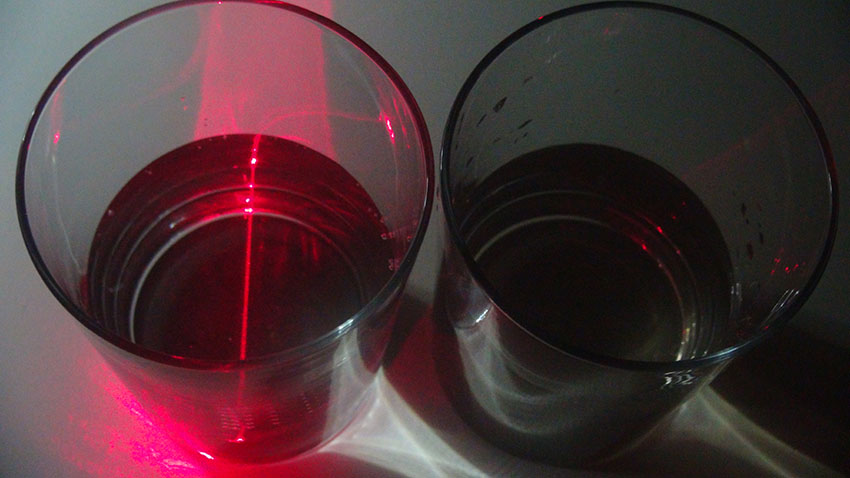
Glass on left is pure distilled water, as you can see, the laser beam is dim and does not reflect any silver particles.
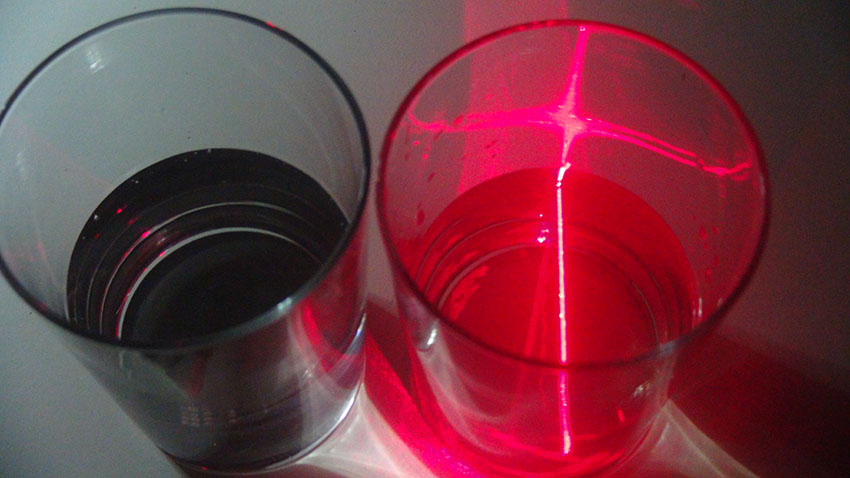
The glass on the right is The Amber Tree colloidal silver. The Tyndall Effect is bright and strong.
As you can see, the silver particles are visible within the beam.
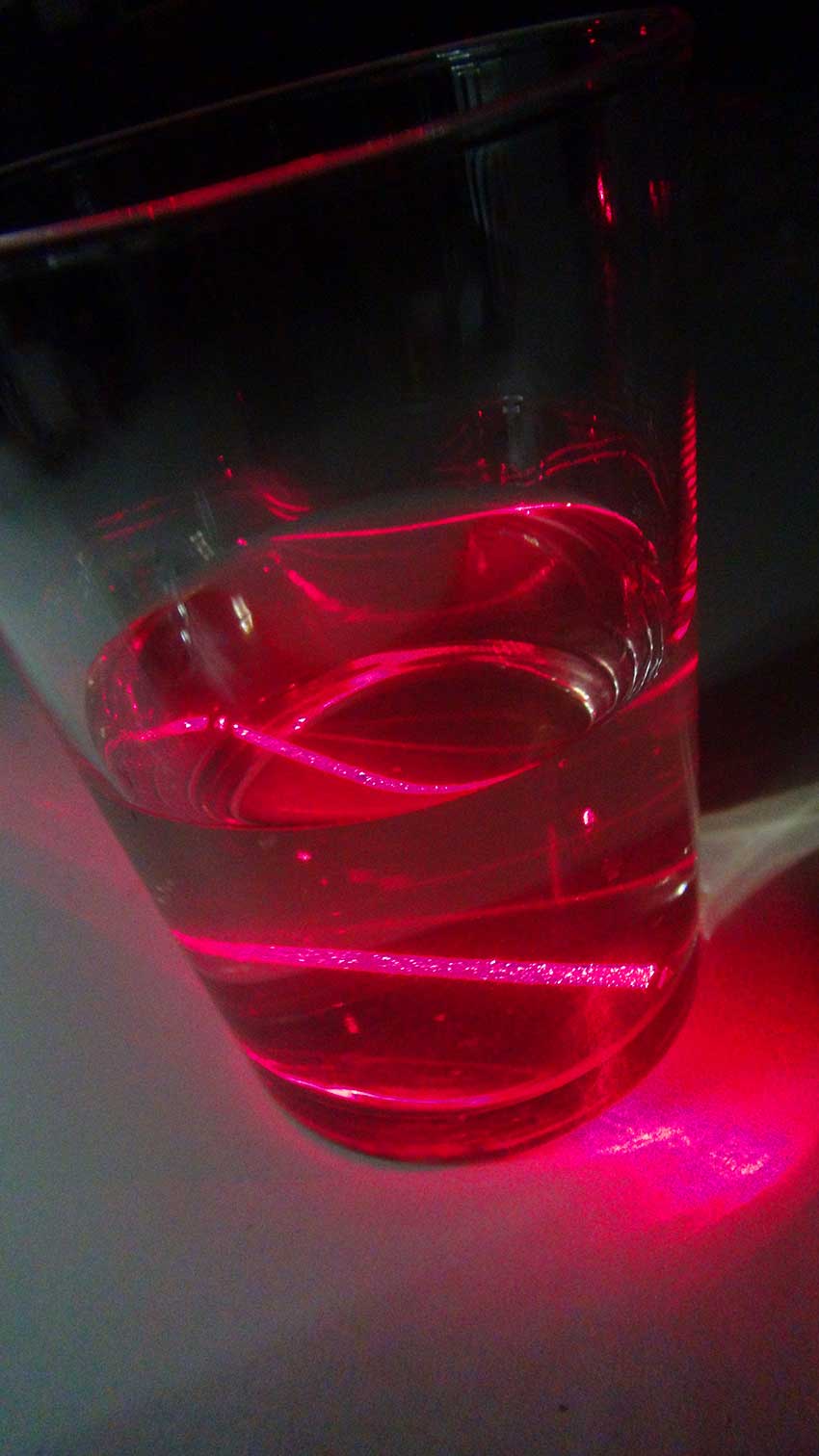
Here is a close up of the Tyndall Effect with silver particles visible.
Colloidal silver benefits
Colloidal silver has been used for over 2,000 years to prevent sickness and heal disease and also widely used in many different applications.
Colloidal silver is known to be a germicide, is anti-bacterial, used as an anti-biotic and for healing benefits also. There are doctors and other
science related institutions that support the use of colloid for various applications. 4
Here is a list of what is said about the benefits of colloidal silver: 6,7
- Can kill over 650 bacteria, parasites, moulds and fungi that could lead to illness (Larry C. Ford, the M.D). It works by ‘suffocating’ them. It is stated to be far more effective than antibiotics, which are only effective against 6-7 different types of bacteria. 5
- Effective for water purification, apparently only 2 tbsp of silver with a higher potency (30ppm or more) is needed to
purify 1 gallon (3.8 litres) of water and kill viruses such as Legionnaire’s that can be found in water (UCLA studies). - Heals skin conditions, such as eczema, psoriasis, ringworm, burns and open infected wounds (Robert O.Becker, M.D).
- Kills viruses and boosts the immune, kills the common cold and the flu, HIV, AIDS, herpes, shingles and warts, hepatitis C (Dr. Martin Hum).
- Respiratory related illnesses, fights against bronchitis and pneumonia, allergies and asthma. These ailments may be caused by pathogens. Studies have indicated that colloidal silver works to destroy them by inhalation (Dr. Axe).
- Infections, said to be effective against sinus and ear infections as well as pink eye (inflammation of the surface and lining of the eye) (Dr. Axe).
Real life tests using The Amber Tree colloidal silver
We thought it would be a good idea to prove the effectiveness The Amber Tree colloidal silver when it came to food preservation. Tests were undertaken in a high temperature and humid environment, especially during the summer. These tests were started in autumn. Here are the images taken from the first day of testing, to the longest period of 11 days later. The results were interesting…
Test 1 – the apple tests
I sliced the same apple and placed the pieces in a bowl of water. In this test, the apples were exposed to air on the surface, but I made sure the surface was also covered with whichever water they were being tested with.
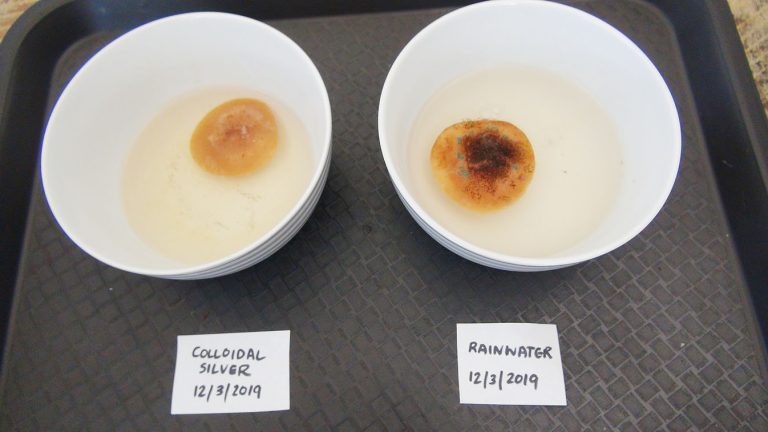
4 days later (above)
4 days later and the mould is very obvious in comparison to the apple in colloidal silver. When I went to throw them out, I noticed the smell from the slice of apple in rainwater indicated that it was more rotted and fermented than the apple in the colloid water.
Test 2 – the milk tests
As I had the apple exposed to air, I thought it may be a good idea to conduct all further tests in an enclosed jar, so perhaps oxidisation wouldn’t happen so fast. In this test I tried ½ jar of full fat cow’s milk mixed with rainwater to fill, and one mixed with ½ cow’s milk and filled with colloidal water.
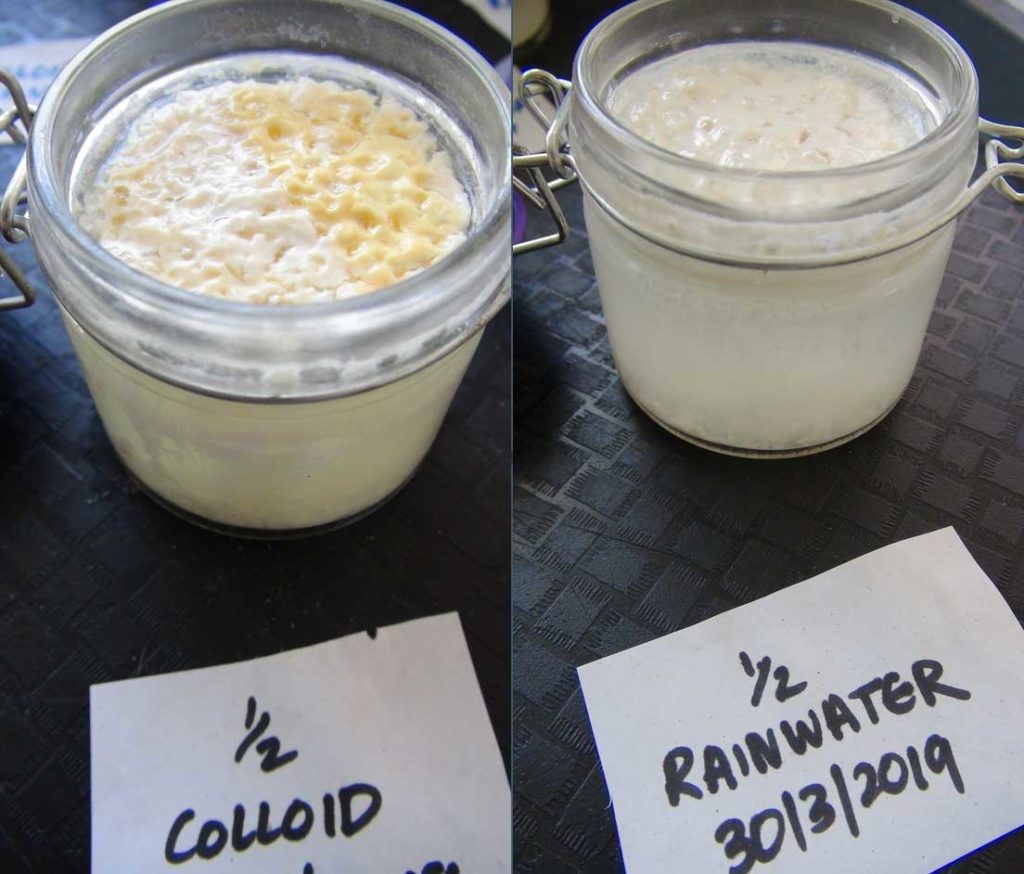
7 days later (above) side by side comparison
7 days later and both were separated, rainwater slightly more. What is interesting about the colloidal example is the light brown film which had developed on top. The rainwater test smelled off, the colloid had a slightly different stale smell.
Test 3 – the grape tests
The grape tests were the longest tests I did, spanning 11 days. Immersing the grapes in a jar filled with colloidal silver and another with rainwater. In the beginning, the grapes sank to the bottom.
There is an obvious difference in water clarity here and the rainwater test has continued fermenting.
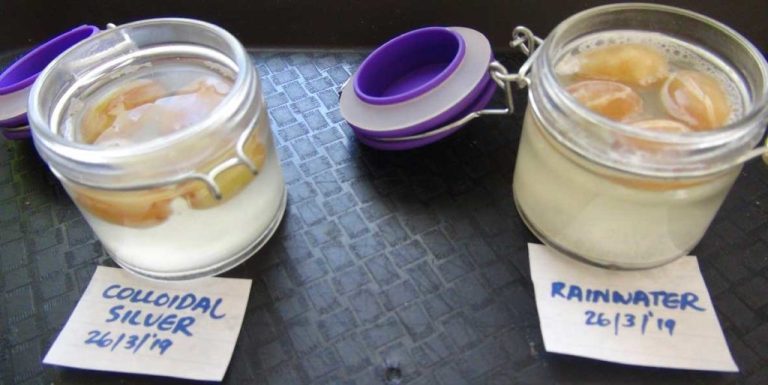
11 days later (above)
11 days later and the colloidal jar is now a little cloudy, the grapes in the rainwater jar have turned brown, whereas some green still remains on the grapes in colloidal.

This is what the grapes looked like when I took them out of their jars 11 days later. The left grape in the picture is from the colloidal jar test and the grape on the right is from the rainwater jar test. The grape in colloid looked more successfully preserved and smelled significantly fresher than the grape in rainwater.
Why buy The Amber Tree colloidal silver?
· We make a fresh, genuine colloidal silver with a higher content of nano sized silver particles in comparison to standard ionic silver.
· High-quality colloidal silver takes time to produce. Our generator runs for up to 48 hours (depending on volume), using a low current to create a high-quality product.
· Our colloid has no fillers or stabilizers. Our colloid simply contains silver particles and distilled water.
· Our silver is made right here in sunny QLD Australia



